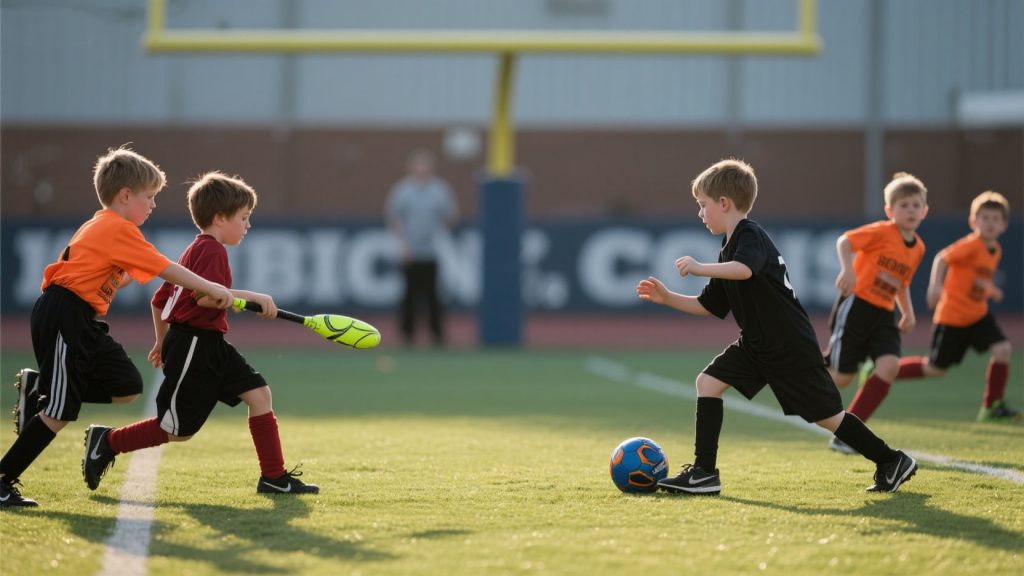Youth Sports Dropout: Why Kids Are Leaving the Game (And How to Stop It)
In the golden age of professional sports, one unsettling trend has quietly taken root: the sharp decline in youth sports participation. While elite athletes dominate headlines and media rights deals break billion-dollar records, the grassroots level—where future stars and lifelong fans are born—is facing a crisis.
According to recent statistics, 70% of children in the United States quit organized sports by the age of 13. Even more concerning: girls drop out at significantly higher rates than boys. This drop-off not only threatens the long-term health of the sports industry but also raises red flags about public health, social development, and gender equity.

The Data Doesn’t Lie: A Decline Across the Board
Several studies conducted over the past decade have confirmed the trend. The Aspen Institute’s Project Play reports a consistent decline in youth sports participation, particularly after the age of 11. While younger children (ages 6–12) show healthy participation levels in at least one sport, the teenage years mark a stark drop-off.
Key statistics:
- 7 in 10 children stop playing organized sports by age 13
- Girls are twice as likely to drop out as boys
- Children from low-income households are 6x more likely to quit due to financial constraints
- Schools are reducing physical education and after-school programs
These numbers reveal that the issue isn’t isolated—it’s systemic.

Why Are Kids Quitting? A Perfect Storm of Pressures
Burnout and Over-Competition
Organized youth sports have increasingly mirrored the structure and pressure of adult athletics. Intense travel leagues, year-round training, and early specialization often lead to physical burnout and emotional fatigue. For many kids, the joy of play is replaced with the fear of failure.
Cost Barriers
The pay-to-play model dominates youth sports in the U.S. Uniforms, equipment, coaching fees, travel, and tournament costs can add up to thousands of dollars annually. This disproportionately affects families in lower-income brackets, limiting access and equity.
Lack of Fun and Inclusion
Multiple surveys show that the number one reason kids play sports is to have fun—but the current system often fails to deliver that. Hyper-competitive environments, lack of playing time, or a singular focus on winning drive many children—especially girls—away from the field.
Academic and Digital Distractions
As children grow older, academic pressures increase. Combined with the allure of screen-based entertainment (TikTok, gaming, streaming), physical activity often takes a backseat in teens’ daily lives.
Gender Gaps and Cultural Barriers
Girls face unique challenges in accessing and staying in sports, from fewer role models to limited support in schools and communities. Cultural expectations and body image concerns can also play a significant role in withdrawal.

Why It Matters: The Broader Impact of Youth Dropout
The implications of this trend stretch far beyond the field:
- Public Health: Lower physical activity levels are linked to obesity, depression, and chronic diseases.
- Social Skills: Sports teach teamwork, leadership, resilience, and discipline—traits essential for adult success.
- Diversity in Professional Sports: The future pipeline of athletes becomes less representative if access is limited to the privileged few.
- The Sports Industry: A decline in youth participation may lead to lower future fandom, viewership, and engagement.
In short, when kids quit sports, everyone loses.

What Can Be Done? A Call to Action for the Sports Ecosystem
The crisis is clear—but so are the solutions. Stakeholders across sports, education, and public health must come together to build a more inclusive, enjoyable, and sustainable youth sports model.
Prioritize Fun Over Winning
Reframe success around participation, skill-building, and enjoyment—not just scores and trophies. Kids stay in sports when they’re having fun.
Subsidize and Expand Access
Governments, leagues, and private sponsors must support low-cost programs, especially in underserved communities. Equipment grants, fee waivers, and public parks investment are critical.
Train Coaches for Youth Engagement
Youth coaches need specific training in child development, inclusion, and positive reinforcement. A good coach can be the deciding factor between a child quitting or staying.
Support Girls in Sports
Promote female role models, ensure equal access, and address unique challenges that girls face in sports. Organizations like Girls on the Run are excellent models to follow.
Embrace Multi-Sport Participation
Early specialization can lead to injuries and burnout. Encouraging kids to try multiple sports keeps them engaged longer and supports holistic development.

Conclusion: Reclaiming the Joy of Play
The decline in youth sports participation is more than just a data point—it’s a cultural signal that something fundamental is being lost. But this trend is not irreversible. By reshaping our priorities, making sports more inclusive and accessible, and putting fun and friendship back at the center, we can reignite a generation’s love for movement.
If the future of sports lies with the youth, then it’s time to listen to what they’re telling us—loud and clear.
If this content infringes on any rights, please contact me for immediate removal.



